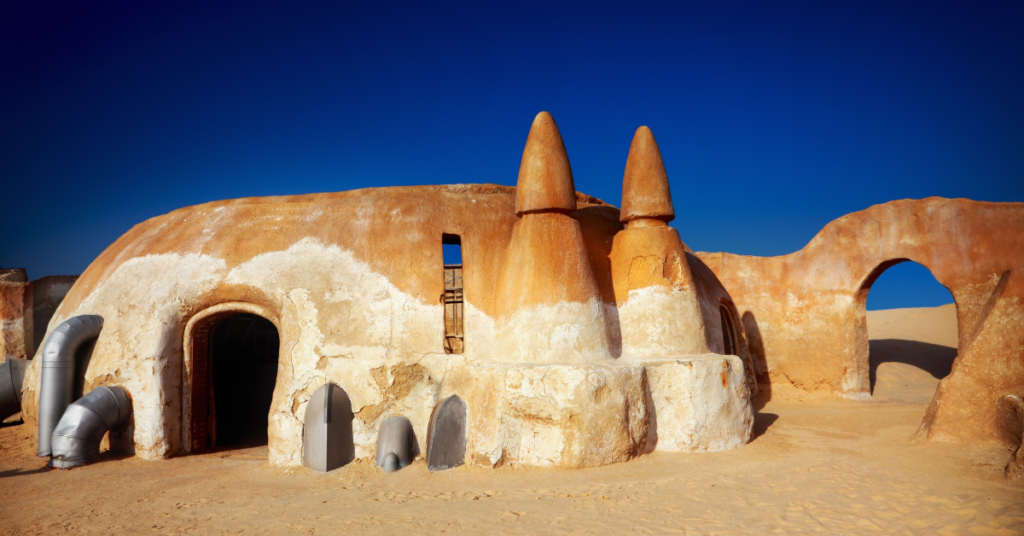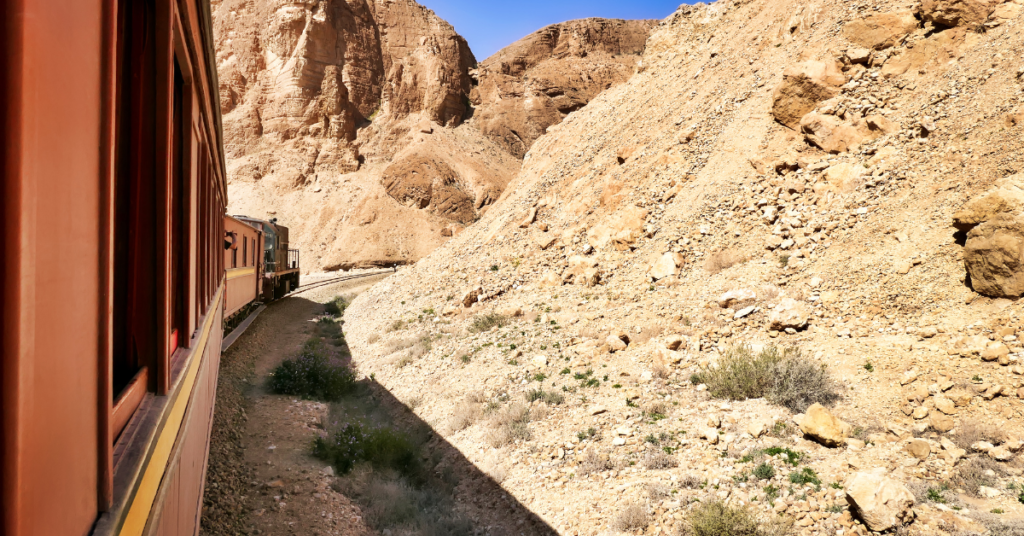Hammamet! That oasis of sunshine on the coast of Tunisia, where the Mediterranean Sea surrounds golden sands and time appears to stop. But this beautiful city offers much more than simply picturesque views. Hammamet is a city rich in history, bustling with fun activities, and begging to be discovered. But where do you even begin with so much to see and do? We have compiled a list of the top 15 best things to do in Hammamet. So, whether you’re eager to learn about centuries-old tales in the Medina or just want to relax on the lovely beaches, we’ve got you covered. Continue reading to learn more about Hammamet’s enchantment!
1. Hammamet Beach
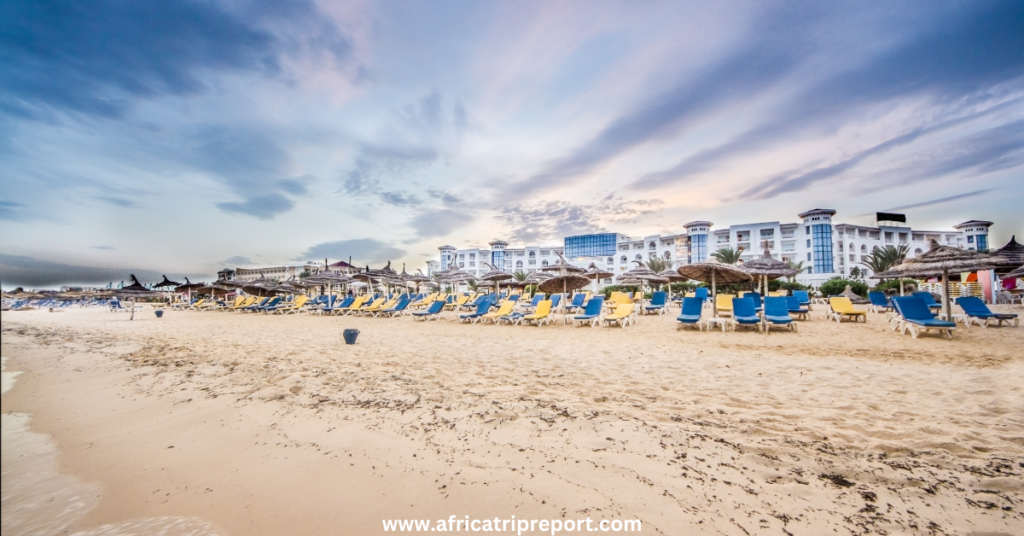
Welcome to the enchanting Hammamet beaches, where relaxation and adventure unite to create an unforgettable experience. It’s not just a beach; it’s a playground of possibilities. The soft sand beckons you to unwind and soak up the sun, while the shimmering waters present a canvas for thrilling activities. Ride the waves on a boat or feel the adrenaline surge as you jet ski across the glistening expanse.
For a taste of tradition, embark on a camel or horse ride, discovering the shoreline from a different perspective. The lazy days in the sun seem to stretch on endlessly, making time feel like a luxury you can indulge in. And as a delightful surprise, the water’s warmth may rival that of the pool, offering the perfect contrast to the sun’s embrace.
At Hammamet beaches, the weather plays its part in the paradise setting, gifting you with 30-degree Celsius days – the kind that make you cherish each moment. And if you happen to encounter a light shower, embrace it with open arms, for it refreshes both the land and your spirit.
Read more: 6 Best Places To Visit In Tunisia For Beach
2. Old Medina

There’s something undeniably captivating about the old town of Hammamet. Enclosed within ancient city walls, the Medina is still very much a living, breathing entity. The maze of narrow alleyways, bustling shops, and vibrant wall art creates an atmosphere that is both enchanting and lively.
Take time to visit local artisan shops like Zardouk’s, where you can immerse yourself in the artistry of Hammamet’s creative minds. While the vendors might be a bit assertive, their enthusiasm is a testament to their passion and the unique charm of the Medina.
Should something catch your eye, don’t shy away from a bit of haggling. It’s all part of the Medina experience! And it’s truly astonishing to discover that many of the goods were crafted just hours or days ago. Keep an eye out for the speedy engraver who works with a small flat chisel – his skill is mesmerizing!
3. Take A Walk Through Hammamet Kasbah

Among the myriad attractions of Hammamet, the historic Kasbah holds its own unique charm. Venturing into this lively area is a joyous affair. The shopkeepers warmly welcome you into their shops, eager to display their myriad of goods. But be prepared, bargaining is part of the experience and essential to get a fair deal. Remember to keep it light-hearted, don’t fixate on one item, and don’t hesitate to walk away – you might be surprised by the last-minute price reduction!
As you delve deeper into the Kasbah, you’ll come across beautiful fish paintings adorning the walls, leading you to the delightful local artist. His artwork is so captivating that we’ve got one hanging in our own apartment from a previous visit.
This place, once a Turkish garrison, offers more than its simple structure suggests. Although it might not be brimming with artifacts, it gifts you with a stunning view of the beach and the town, worth the visit alone.
Don’t mistake the bustling Souk located at the front of the Kasbah for the fort itself. The actual entrance to the Kasbah is through an archway around the corner from the seafront, up a flight of stairs. The clearly displayed entrance fee is 5 dinars per person, with an additional 1 dinar for photo permission.
4. Discover Pupput Roman Site
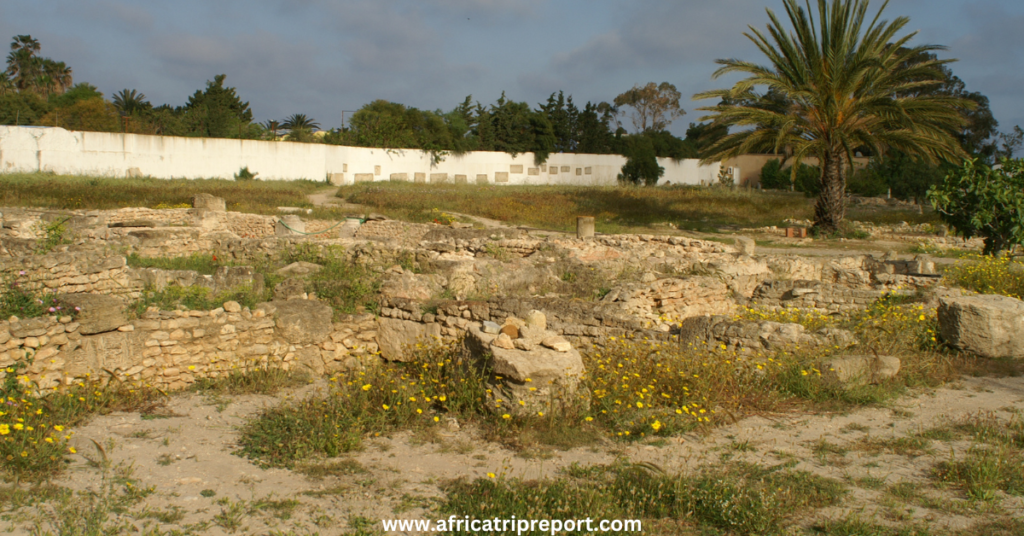
There’s something profoundly captivating about exploring the relics of a civilization long gone, and that’s precisely what you get at the Pupput Roman Site in Hammamet. This site, boasting intriguing Roman ruins, including a bathhouse, offers a fascinating journey back in time for history enthusiasts.
The Pupput Roman Site may not look promising from the outside, but if you go farther, you’ll find 3rd and 5th century remains. Visits are worthwhile just for the mosaics.
This site, admittedly, is a haven for history buffs. Those intrigued by Roman history will find the seemingly empty field unraveling its secrets with every step. It may not offer much for children or shoppers, and it’s true that the area is quite exposed, hot, and dusty. However, if you’re lucky enough to encounter an archaeologist at work, take the opportunity to engage in a conversation. These experts are often happy to share their knowledge, making the visit all the more enriching.
5. Learn About Culture At George Sebastian Villa
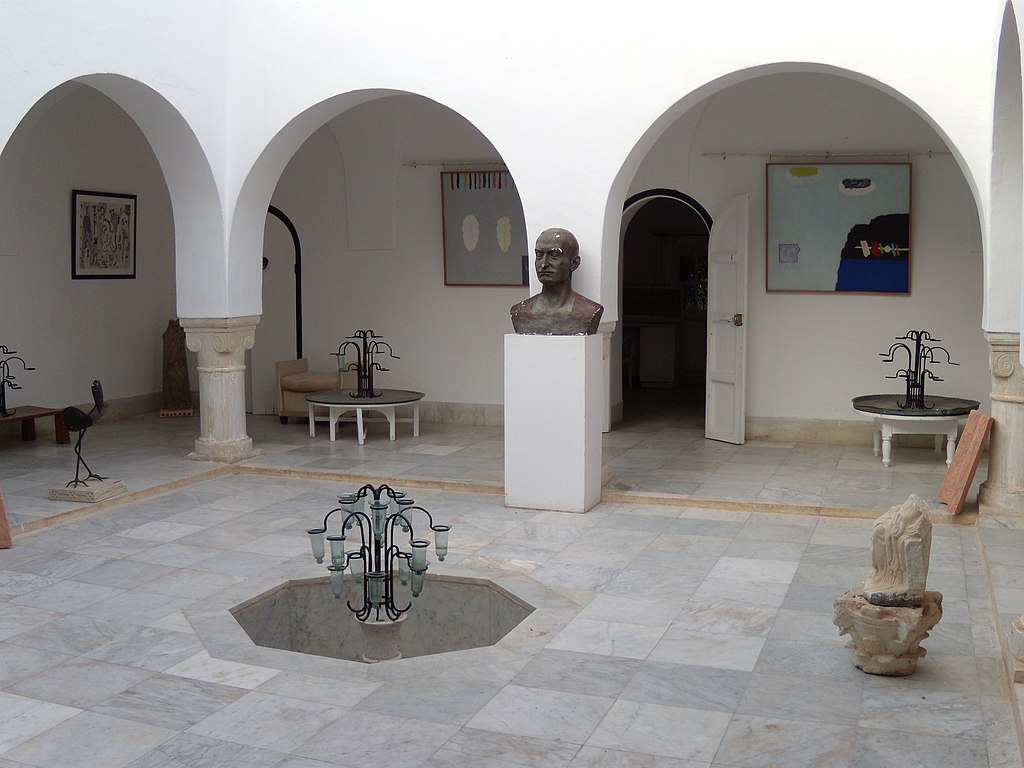
Tucked away from the hustle and bustle of the main street, the George Sebastian Villa stands as an oasis of serenity and elegance. A stroll around the sprawling gardens, blooming with rambling orchards, offers an idyllic escape from the urban cacophony. The beautiful homestead, although bereft of elaborate storytelling, exudes an undeniable charm and allure that compels you to imagine its historical narrative.
Stepping into the Cultural Center, which is now free to enter, adds another layer to your experience. Be prepared to meet a friendly guard at the gate, who will introduce you to the refreshing taste of freshly squeezed orange or lemon juice, available for a few dinar. The entire premises are a fragrant haven of lemon and orange trees, and the distinct aroma of olives, hinting at the delicious olive oil available for sale.
Scattered throughout the grounds, you’ll discover an eclectic collection of modern art sculptures – from hounds sculpted out of scrap machine parts to the striking enamel mosaic gracing the entrance. A fully functional amphitheater awaits your presence, hosting a variety of music and theater performances that you can enjoy by booking tickets in advance.
Stepping inside the Villa itself is like journeying back in time. Once equipped with all modern amenities like a fridge, oven, indoor plumbing, hot tub, and swimming pool, the Villa now stands as a time capsule of its glamorous past. You can almost hear the echoes of bygone eras reverberating through its halls, mingling with the beautiful artwork adorning the walls and sitting on the shelves. The grand doors and doorways, coupled with the quaint louvre windows offering splendid views, add to its overall allure.
6. Take A Horse Drawn Carriage In Yasmine Hammamet

A horse-drawn carriage trip in Yasmine Hammamet, Tunisia, gives you the opportunity to travel back in time, which is perhaps the greatest way to see a country. It is a journey that transports you into a charming and nostalgic world rather than merely serving as a method of transportation.
A dynamic mix of dining, shopping, and cultural attractions can be found in Yasmine Hammamet, a contemporary resort town south of the old Hammamet. Nevertheless, you may appreciate the scenic surroundings while you travel at a moderate speed in a horse-drawn carriage.
Notably, the horses are kept healthy and well cared for, guaranteeing that your journey is both fun and morally correct. Additionally, the horse-drawn carriages are kept in good condition.
Read more: How To Travel Around Tunisia By Train?
7. Admire The White Arabic Arch
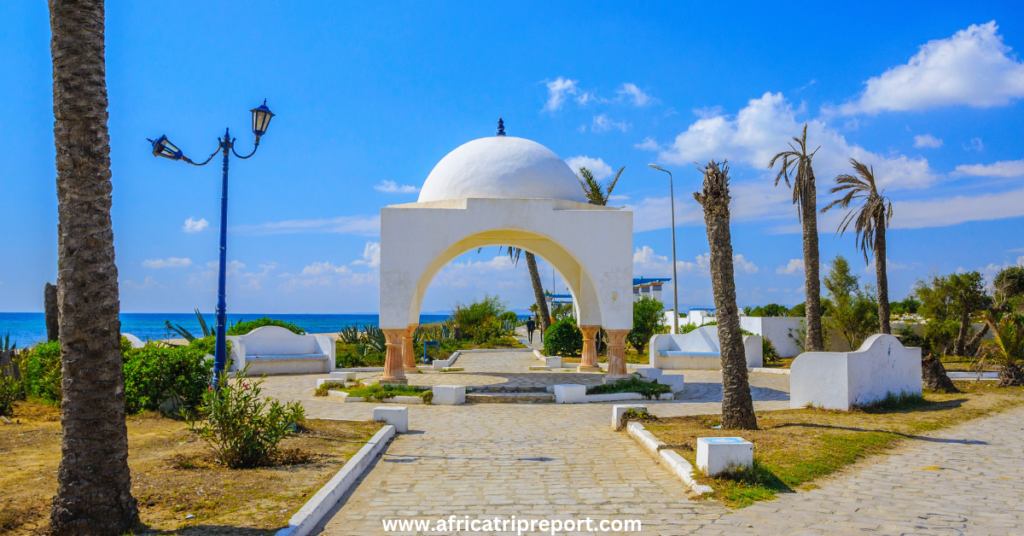
Nestled in the heart of Hammamet, Tunisia, is an iconic symbol that carries the essence of the city – the majestic White Arabic Arch. This structure, standing tall amidst the hustle and bustle of the city, offers a strikingly beautiful representation of traditional Tunisian architecture, making it a must-visit attraction for any traveler.
But the arch’s beauty extends beyond how it appears from the outside. It has historical significance as the entrance dividing the modern city from Hammamet’s old Medina. The archway transports you away to a time of winding alleyways, traditional souks, and historic structures. It feels like entering a time machine.
8. Shop At Costa Mall

When in Hammamet, Tunisia, seeking a peaceful shopping experience, Costa Mall emerges as a refreshing sanctuary. Here, you can enjoy unhurried browsing, exploring a diverse array of quality products without the usual pressure of insistent sellers. Whether you’re hunting for presents or searching for a special keepsake, you’ll find beautiful options such as wooden candle holders, intricately handcrafted to remember your visit by.
Costa Mall’s staff take pride in their exceptional service, always ready to assist, yet respectfully allowing you to explore at your own pace. Their friendliness and courtesy add to the overall pleasing shopping experience.
9. Discover The Architecture Of Nabeul
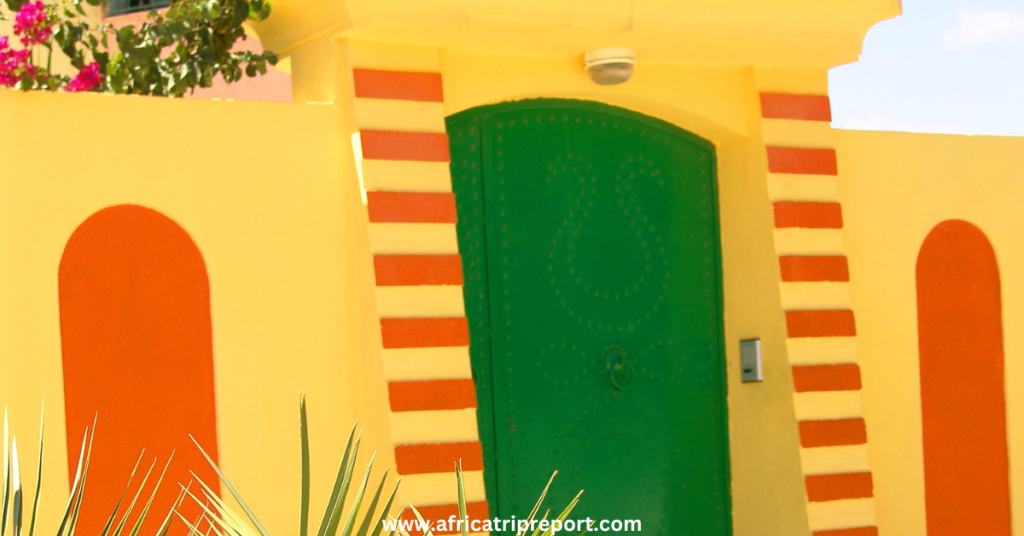
Located a mere 10 kilometers north of Hammamet, you’ll discover Nabeul, the Cap Bon Peninsula’s vibrant heart. This bustling town nestles against an extensive sandy beach that gracefully outlines the Gulf of Hammamet, offering a picturesque backdrop to this lively community.
Enveloped by lush, extensively cultivated farmland, Nabeul’s Friday market teems with vibrant colors and enticing aromas of fresh produce. It’s a haven for photographers, who’ll find an abundance of lively scenes and local interactions to capture.
Nabeul isn’t just known for its produce; it’s also a hub for traditional crafts. Shoppers will find beautifully crafted local pottery and woven mats. Textile lovers can bag some excellent bargains here, with prices generally lower than in Hammamet.
While in Nabeul, make sure to visit the Archaeological Museum on Avenue Habib Bourguiba. Though small, this museum provides a captivating glimpse into the Cap Bon’s historical narrative. The displays boast an impressive collection of Punic and Roman artifacts unearthed from various archaeological sites across the peninsula, offering visitors an enriching journey through time.
Art enthusiasts shouldn’t miss the Hub Creative on Avenue Habib Thameur. This art gallery serves as a platform for Tunisian artisans, promoting their work and hosting revolving exhibitions of contemporary ceramics.
10. Carthage Land
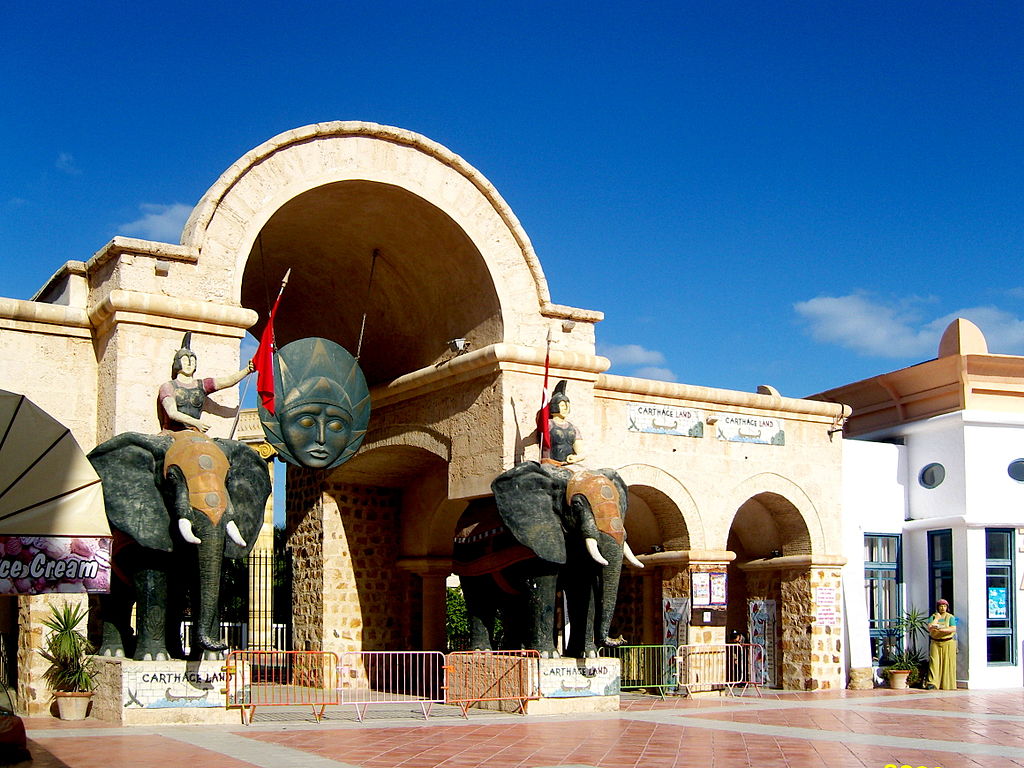
Positioned right in the heart of Yasmine Hammamet’s vibrant medina, equidistant from Tunis and Sousse, stands Carthage Land – Tunisia’s largest and most renowned amusement park. This treasure trove of fun and excitement caters to both children and adults, promising an unforgettable day of entertainment and leisure.
Carthage Land is meticulously separated into a number of zones, each of which is intended to provide a certain experience. These include a themed amusement park, water parks, cultural exploration zones, kid-friendly areas, food options, and an extreme zone for thrill-seekers. The King Kong Spinning Coaster, a particular ride with a 13-meter rise and a peak speed of 60 kilometers per hour, stands out as the top attraction, especially for thrill-seekers.
Remember that certain rides might not be available outside of the peak season, and the water park closes in the months that are not summer. Despite these little drawbacks, a trip to Carthage Land is a thrilling experience and a great way to end your Tunisian vacation.
11. Learn About The History Of Kerkouane

Venture just 86 kilometers north of Hammamet, and you’ll stumble upon the fascinating historical site of Kerkouane. Unearthed in 1952, this Punic town dates back to the 6th century BCE, predating even the iconic Carthaginian civilization.
The town, designed in a horseshoe shape and fortified by a double ring of walls, reveals a well-planned community with a sophisticated network of streets and buildings. Excavations have unearthed marble-floored houses adorned with red and white mosaic decorations, many remarkably well-preserved. The houses were typically designed around a central courtyard with a fountain, showcasing the architectural prowess of the era.
Notably, nearly every house had its own bathroom, a rare luxury in ancient times. The presence of drainage channels further highlights the town’s advanced infrastructure. Of particular interest is the remnants of a dye factory, where the much-coveted murex dye was produced. This purple dye, requiring nearly 5000 shellfish for a gram, was a prized Phoenician monopoly.
The excavation site is accompanied by a museum showcasing the history of Kerkouane and the archaeological progress since 1966. The displays feature a variety of artifacts including ceramics, jewelry, and ancient coins.
While Kerkouane was abandoned in 250 BC and never rebuilt, the ruins stand remarkably well-preserved, allowing visitors to wander freely and absorb the aura of ancient times. Remember, though, that the coastal location can make it quite windy.
12. Visit El Haouaria
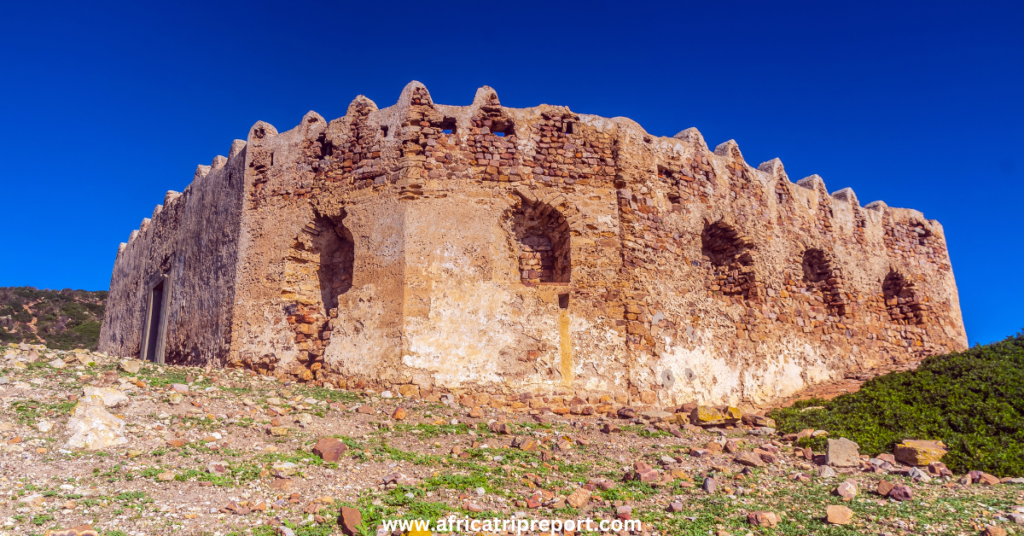
The beauty of staying in Hammamet, Tunisia, isn’t limited to the city’s own picturesque landscapes and rich history; it also serves as the perfect base for intriguing day trips. One such trip takes you to El Haouaria, a coastal town perched on the northern tip of Cap Bon Peninsula, approximately 90 kilometers from Hammamet.
One of El Haouaria’s major attractions is the Roman-era Grottoes, also known as Ghar El Kebir. These ancient quarries are testament to the toil of thousands of laborers who extracted stone for some of the Roman Empire’s grandest buildings. As you navigate the labyrinthine network of tunnels, you’re transported back to an era of remarkable architectural ambition.
Read more: How Many Days Are Enough To Visit Tunisia?
13. Enjoy The Hot Springs Of Korbous
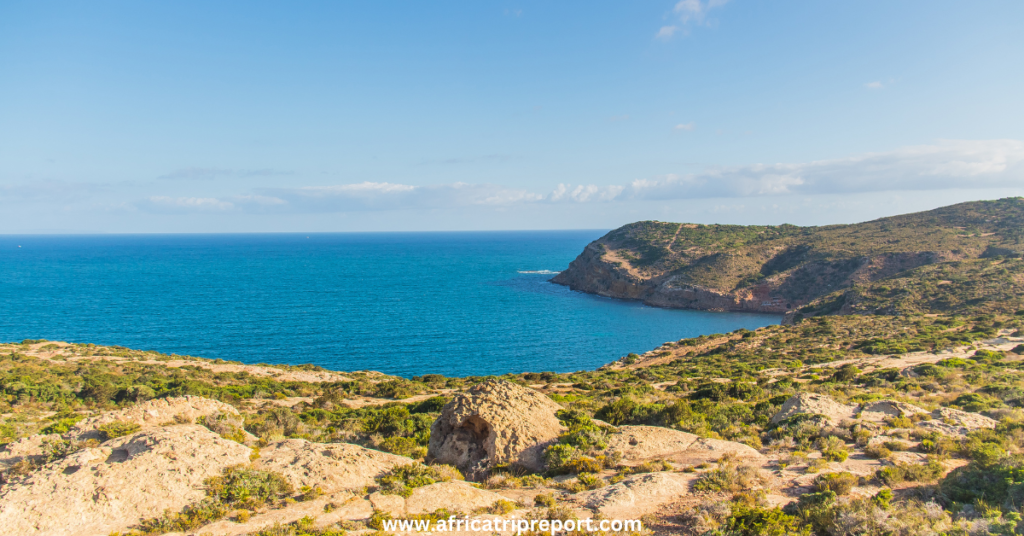
A hidden gem located about 68 kilometers northwest of Hammamet, the Korbous hot springs have attracted visitors since the Roman era, when they were known as Aquae Calidae Carpitanae. Rediscovered by Ahmed Bey in 1801, the area was developed into a therapeutic spa complex.
The mineral-rich waters of these hot springs are renowned for their therapeutic properties. They are believed to assist in the treatment of various skin conditions such as eczema and also offer relief from rheumatic and arthritic pains.
Venture just two kilometers north of Korbous, and you’ll find even more hot springs to explore. The Hamma el Atrous Springs stand out, their inviting pools cascading into the sea with steamy temperatures reaching up to 50 degrees Celsius.
14. Have A Day Trip To Kelibia Beach

Tunisia’s beaches can be a hit or miss affair, with some resembling a landfill more than a pristine stretch of sand. But a scenic 76-kilometer drive northeast from Hammamet will transport you to a different world – the exquisite Kelibia Beach. Here, the sand and water are refreshingly clean, shimmering under the warm Tunisian sun, with the Mediterranean’s bright blue waters lapping against the shore.
Kelibia Beach isn’t just the best beach I’ve seen in Tunisia, it´s also the perfect beach for families seeking tranquility and youngsters looking for a place to relax, yet not too far from the vibrant clubs and restaurants of Hammamet and Nabeul.
But Kelibia isn’t just about the beach. The small town is steeped in history, crowned by a Byzantine-era fortress perched on a 150-meter-high crag. Enhanced and fortified by the Hafsid dynasty, Kelibia Fortress’s sturdy walls have stood the test of time. Climbing up to the bastions rewards you with magnificent panoramic views of the Mediterranean, and on a clear day, you can spot the silhouette of Sicily in the distance.
15. Musée des Religions
In the heart of Hammamet, you’ll find a unique sanctuary of interfaith dialogue and understanding – the Musee des Religions. Standing tall with its distinctive tower, echoing the minaret of Tunisia’s Jamaa Zitourna Mosque, one of Africa’s largest, and marked by a church bell, this museum stands as a symbol of unity and mutual respect among the three monotheistic religions.
This one-of-a-kind institution offers a unique exploration of Judaism, Christianity, and Islam, bringing their shared values and unique traditions together under one roof. The museum houses an eclectic array of religious artifacts, engravings, manuscripts, and descriptions of rituals and symbols, all echoing the rich tapestry of faith that has characterized Tunisia’s history.
Expect to see miniature replicas of renowned architectural marvels, such as Kairouan’s Mosque Okba Ibn Nafi’, the five-naved Basilica of Damous el-Karrita in Carthage, the Ghriba of Djerba, and the Chapel of Saint-Louis. The museum honors the diverse religious history of Tunisia, fostering a sense of unity and brotherhood among different faiths.
Bottom Line
So there you have it, the enchanting blend of history, culture, and adventure that makes Hammamet, Tunisia, such an irresistible destination. Who could resist the lure of the ancient ruins at the Pupput Roman Site, or the atmospheric wanderings through the timeless old town, the Medina?

I’m a total Africa enthusiast! I’ve been exploring this amazing continent for years and I can’t get enough of its diverse cultures, stunning landscapes, and incredible wildlife. From hiking through the savannahs to sampling local cuisine, I’m all about immersing myself in everything Africa has to offer. I’m constantly on the lookout for new and exciting experiences, and I love sharing my passion and knowledge with fellow travel lovers. If you’re looking for an adventure like no other, Africa is the place to be, and I’m here to help you make the most of it!


